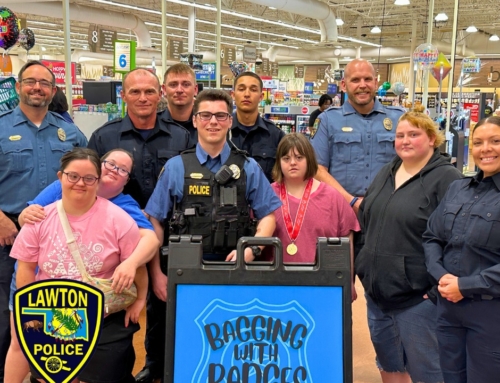
Law enforcement officers are the backbone of our communities, dedicating their lives to ensuring public safety and maintaining order. While their commitment and bravery are commendable, there is a silent adversary that often plagues these everyday heroes: low back pain.
The Daily Rigors of Policing
Imagine carrying the weight of responsibility on your shoulders, both figuratively and literally. For police officers, the physical demands of the job go beyond the uniform and extend to the strains of their duty belts, the constant need for vigilance, and the unpredictable nature of law enforcement.
Understanding the Impact
According to studies and reports, low back pain is one of the most common musculoskeletal complaints among police officers. It’s not merely a discomfort, but a debilitating condition that affects their work performance, quality of life, and the safety of the communities they serve. Low back pain affects almost 38% of the general population. In law enforcement that number jumps to 67.7%. That means that on average, over half of our police force is dealing with pain daily.
The implications of low back pain extend far beyond physical discomfort. It affects officers’ mental health, job satisfaction, and overall well-being. The pain often leads to absenteeism, reduced productivity, and, in severe cases, premature retirement from a career they’re passionate about.
There is a plethora of reasons for this. Sitting for extended periods of time, standing for lengthy periods of time and affecting an arrest are some of the leading causes. Combine these with the fact that police officers are often asked to respond with immediate and extreme physical exertion with zero warning and it is no wonder the body takes a toll. Psychological stress, duty belts, load-bearing protective vests and lack of physical conditioning can also play a role. Furthermore, the psychological impact of dealing with chronic pain while navigating high-stress situations can take a toll on an officer’s mental resilience, potentially affecting their ability to make split-second decisions crucial to their role.
Determining the Cause
While there are many different causes or combinations of causes, the first thing we should do is attempt to find the trigger. How much time is spent seated? Standing? Leaning over to input information into your mobile computer system? Is the pain just on one side of the low back or both? Do you stand on one hip more than the other? Is your wallet carried in your back pocket and how thick is it? Any one of these or a combination of a couple of them could be the culprit. Narrowing this down may be difficult so let us start with the basics.
When standing, which leg carries the weight most of the time? When you are seated, do lean to one side or always put pressure on one arm rest, but not the other? Do you feel pressure in your low back when seated in the car? Noticing these patterns can be the first step in correcting postures that are causing weakness/tightness that can be the cause of your pain.
Where, When, and How the Pain Occurs
These three factors can help to solidify a plan of action to fight back against the daily wear and tear that is causing the pain.
Where: Delineating which area the pain occurs in is step one. Is it occurring on just one side, both, or midline of the spine? Is it above the belt line or below? Does it move as the day goes on or does it stay in one place?
When: Is your back painful first thing in the morning? After your shift? All the time?
How: Is it a shooting pain or and achy pain? Does it radiate up, down, or around your sides? Are there certain movements that can trigger it?
All this information can give us clues as to the root cause. While it may seem a bit overwhelming, there are a few things that we can do to thwart the pain before we take any action.
Prevention and Treatment
Treating low back pain among police officers involves a multifaceted approach that combines various strategies to alleviate pain, improve mobility, prevent further injury, and enhance overall well-being. Here are recommendations for treating low back pain in law enforcement:
Physical Therapy and Exercise: Physical therapy sessions focusing on strengthening the core muscles, improving flexibility, and correcting posture can be beneficial. Specific exercises targeting the lower back, abdomen, and hips can help reduce pain and prevent future injuries like these three that I recommend for anyone who experiences low back pain:


Cat/Cow: This exercise is great for getting the spine moving and waking up some of the stabilizer muscles that have been slowly, but surely deactivated/weakened over the years. When the spine doesn’t move well, it tends to squeeze on things that should be squeezed and then we get pain. Try this in the morning, before a workout or anytime you have been stationary for an extended period, you will feel great afterwards!

Glute Bridges: This exercise can get your glutes, hamstrings, and lumbar support muscles working together and in the correct order. Once you’ve mastered this base version, then you can move to single leg, weighted and eventually hip thrusters to increase strength in all of these muscles.

Side Planks: Boring but oh so effective! This is what I consider a ”full” side plank. If these are really hard you can bend you leg at the knees and side plank in that position until you can build a bit of strength up and lock in the correct form.
These exercises are just the basics, but they build a great foundation for proper movement and core strength that can support good spine health. The Following are some more tips, tricks and modalities that should be considered as well.
Ergonomic Assessments and Modifications: Conduct ergonomic assessments of police equipment and patrol vehicles to ensure they are conducive to spinal health. Adjustments in duty belts, seat adjustments, and ergonomic gear can help reduce the strain on the lower back during daily tasks.
Mind-Body Techniques: Encourage officers to explore mind-body techniques such as yoga, Pilates, or tai chi, which emphasize relaxation, flexibility, and stress reduction. These practices can help improve posture, reduce tension, and alleviate back pain.
Pain Management Techniques: Explore pain management strategies such as heat or cold therapy, massage therapy, and transcutaneous electrical nerve stimulation (TENS). These methods can help alleviate acute discomfort and provide temporary relief.
Weight Management and Lifestyle Changes: Encourage maintaining a healthy weight through proper nutrition and regular exercise. Excess weight can contribute to increased strain on the lower back. Lifestyle modifications, including quitting smoking and reducing alcohol intake, can also positively impact back health.
Workplace Modifications and Training: Implement workplace modifications based on ergonomic principles to reduce strain during routine tasks. Provide training on proper lifting techniques, body mechanics, and posture awareness to prevent injuries while on duty.
Stress Reduction and Mental Health Support: Address stress management through stress reduction techniques, counseling, or mindfulness practices. Chronic stress can exacerbate pain, so promoting mental health support is crucial.
Conclusion
As we have explored the complexities of this issue, from the daily rigors of policing that contribute to the prevalence of low back pain to the strategies and treatments available for relief, it is evident that the well-being of our officers is a collective responsibility.
Police departments must foster a culture of proactive care, providing access to healthcare professionals, ergonomic assessments, and resources for physical therapy and stress management. Ensuring that patrol vehicles, duty gear, and work environments are conducive to spinal health is pivotal in reducing the risk of back injuries.
Equally crucial is raising awareness among officers about the significance of proper body mechanics, exercise, and maintaining a healthy lifestyle. By promoting preventive measures and early interventions, we can mitigate the impact of low back pain and improve the overall health and longevity of those dedicated to serving and protecting.
Article authored by:
Logan Cobb, ATC, CSCS
Operations Lead, Ready Rebound Vitality







Get Social